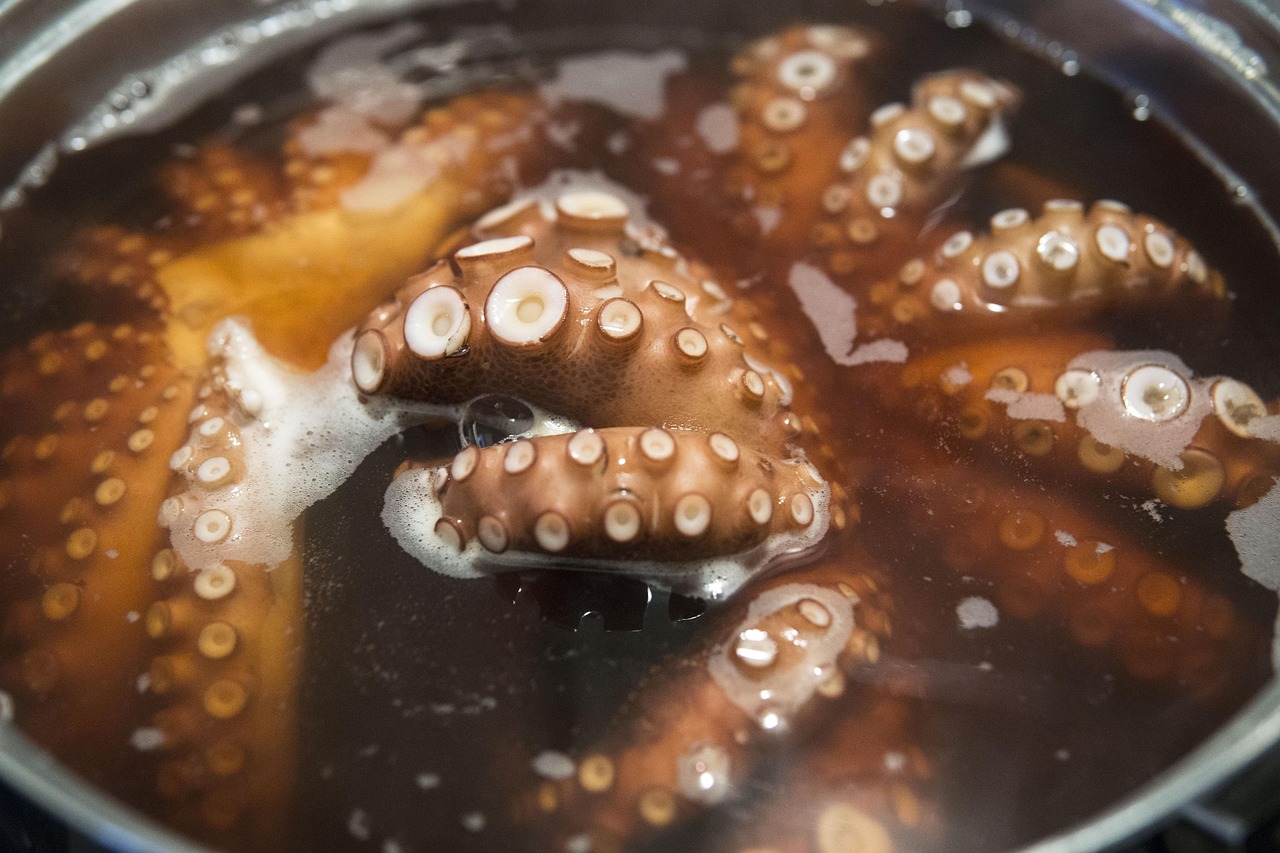Octopus has quietly crept from the periphery of fine dining into the heart of modern menus. Once reserved for adventurous eaters or Mediterranean restaurants, it has now increased its presence by 8% across menus worldwide, according to SeafoodSource. You’ll find it not only grilled as a centerpiece but tucked into appetizers, salads, and pasta. Chefs love its unique mouthfeel—tender when cooked right, crisp at the edges when charred, and glossy when glazed. For diners, it offers novelty, texture, and flavor versatility. Octopus may not yet rival shrimp or salmon in popularity, but its rising visibility signals a broader movement: seafood that delights through both taste and story.
Trend Snapshot
| Aspect | Details |
|---|---|
| Trend Name | Octopus Renaissance – growth of octopus on modern menus |
| Key Components | Unique texture, bold flavor, versatility across dishes |
| Spread | Global menus, especially in appetizers, salads, pasta, grilled mains |
| Examples | Grilled octopus with glaze, octopus tacos, carpaccio, pasta toppings |
| Social Media | Visual appeal boosts Instagram‑friendly plating |
| Demographics | Foodies, millennials, adventurous seafood eaters |
| Wow Factor | Tender‑crisp texture chefs rave about |
| Trend Phase | Emerging mainstream adoption |
Octopus Goes Mainstream
Octopus has become a rising star in restaurant kitchens, with SeafoodSource reporting an 8% increase in its menu presence. Once considered exotic, it’s now appearing in casual and fine dining alike. From tapas bars to upscale American grills, chefs are using octopus as both a conversation starter and a versatile ingredient. Its boldness lies not just in taste but in its ability to adapt—pairing seamlessly with citrus in a salad, smoky paprika in a taco, or rich tomato in pasta.
This mainstreaming reflects shifting consumer appetites. Diners today seek proteins that deliver both novelty and authenticity. Octopus bridges those desires—it feels adventurous but rooted in global tradition, from Mediterranean grilling to Japanese sashimi. Its rise is part of a larger move toward seafood diversity, but octopus in particular provides a dramatic contrast to the familiar mildness of salmon or cod.
Texture as the Hook
Ask chefs why octopus is trending, and the answer is simple: texture. Chef Victor Albisu told Nation’s Restaurant News, “An amazing mouthfeel when cooked tender, a crispy outside and a nice glaze”. That sensory duality—chewy yet tender, crispy yet juicy—is exactly what modern diners crave. It provides contrast in every bite, and contrast is the language of contemporary cuisine.
Cooking technique plays a decisive role. Octopus must be carefully prepared—boiled, braised, or sous‑vided for tenderness, then seared or grilled for char. This process turns it from rubbery to sublime. For chefs, that transformation offers not only a showcase of skill but also an opportunity to create dishes that impress both palate and presentation.
Versatility on the Plate
Octopus thrives across cuisines because it is both bold and adaptable. Mediterranean chefs pair it with lemon and herbs; Latin American chefs fold it into tacos; Japanese kitchens slice it thin for sushi or carpaccio. Pasta dishes feature it sautéed with garlic and olive oil, while fine dining menus often glaze and char tentacles as a centerpiece protein.
The visual appeal also matters. Octopus has striking presentation value—tentacles arranged artfully on plates invite both appetite and Instagram photos. Its deep char lines and glossy glaze make it as photogenic as it is flavorful. That aesthetic quality strengthens its place in modern dining, where social media is part of the culinary experience.
Why Now? Cultural Appetite and Sustainability
Octopus’s rise aligns with several broader food trends. Diners are exploring bolder textures and flavors, moving away from safe, mild seafood. They’re also more willing to try proteins once considered “challenging.” This adventurousness benefits octopus, which sits at the intersection of novelty and tradition.
Sustainability also plays a role. While octopus fisheries are complex and not without concerns, many chefs and suppliers are highlighting responsibly sourced options. The appeal of octopus is strengthened by stories of traceability and ethical sourcing, which resonate with modern diners seeking to align pleasure with values. Though sustainability challenges remain, the conversation positions octopus as part of a more thoughtful approach to seafood.
A Signal for Seafood’s Future
Octopus’s mainstream moment is more than a passing fad. It signals the growing role of seafood diversity in modern menus. Just as diners once expanded from shrimp cocktails to sushi, they’re now embracing octopus as a marker of culinary curiosity. Its presence across menu types—casual to fine dining—suggests it’s here to stay.
The octopus story also points to a broader truth: future menus will thrive on proteins that combine narrative, texture, and presentation. Octopus is simply the latest, and perhaps most photogenic, example.
Octopus’s rise reflects how modern dining weaves together chef creativity, adventurous palates, and a search for sustainability. Its dual texture, adaptability, and visual drama make it one of the most exciting ingredients on the plate today. More importantly, its growth signals a broader appetite for seafood that goes beyond the familiar. Octopus may not dominate menus the way salmon does, but its star is undeniably on the rise.
For more on how seafood diversity is reshaping what we eat, see our feature.

